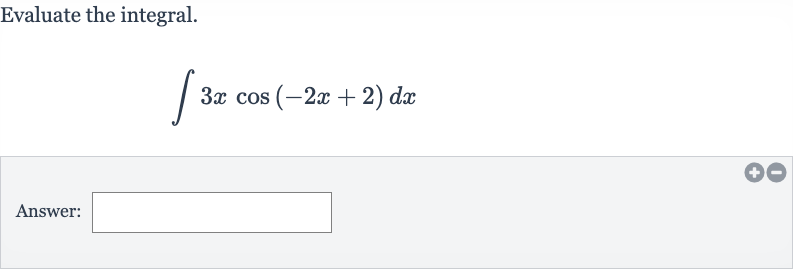AI tutor
Full solution
Q. Evaluate the integral.Answer:
- Identify Integral: Let's first identify the integral we need to evaluate:This is an integration problem that involves a trigonometric function and a polynomial. We can use integration by parts, which is based on the formula , where and are parts of the integrand that we choose.
- Choose and : Choose and for integration by parts. A good choice here is to let (since its derivative is simpler) and (since the integral of the cosine function is straightforward).So, we have:
- Find : Now we need to find by integrating . To integrate , we can use a substitution. Let , then . We need to adjust for the , so we multiply by outside the integral to compensate for the change of variables. (after substitution and adjustment)Now we substitute back for to get in terms of .
- Apply Integration by Parts: Now that we have , , and , we can apply the integration by parts formula:
- Integrate Second Term: Next, we need to integrate the second term. We can use the substitution method again with , , and adjust for the as before.Substitute back for to get the integral in terms of .
- Combine Results: Combine the results from the integration by parts formula:Simplify the expression:

